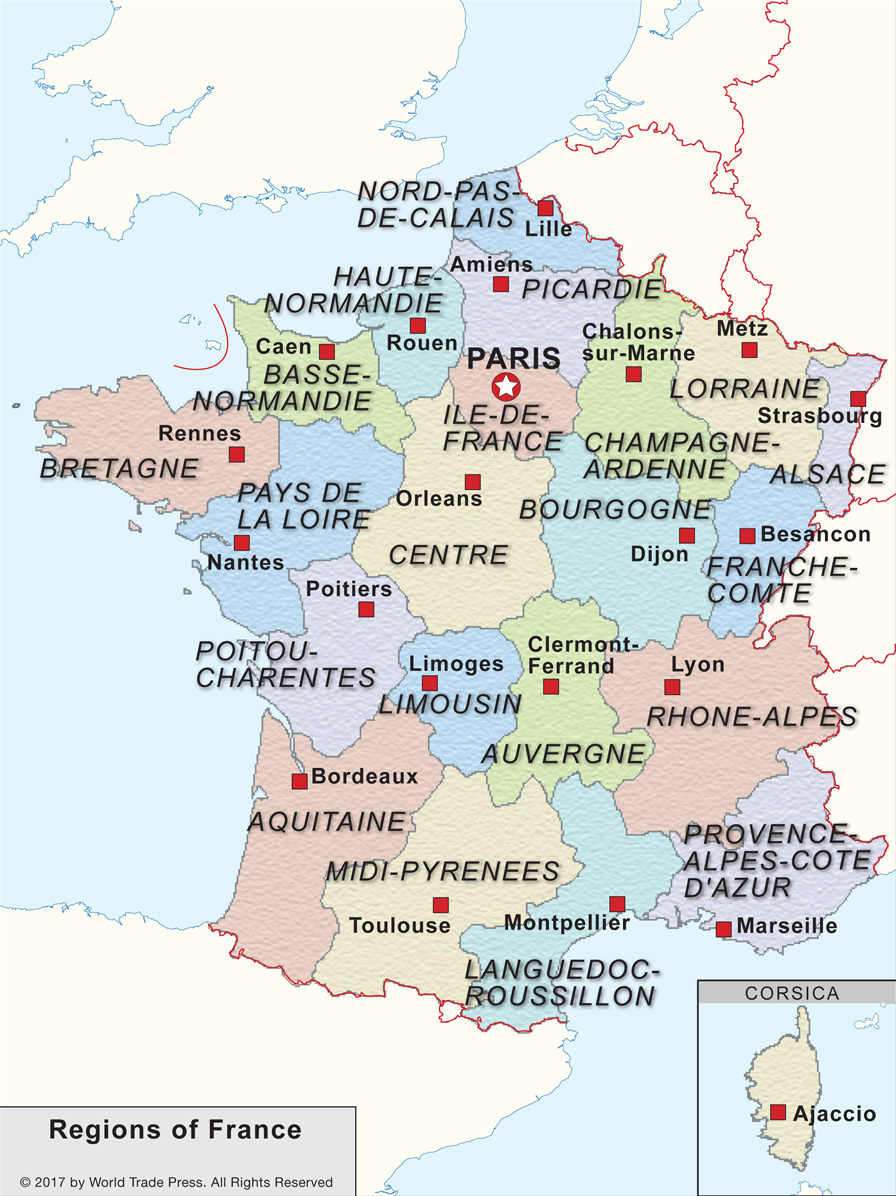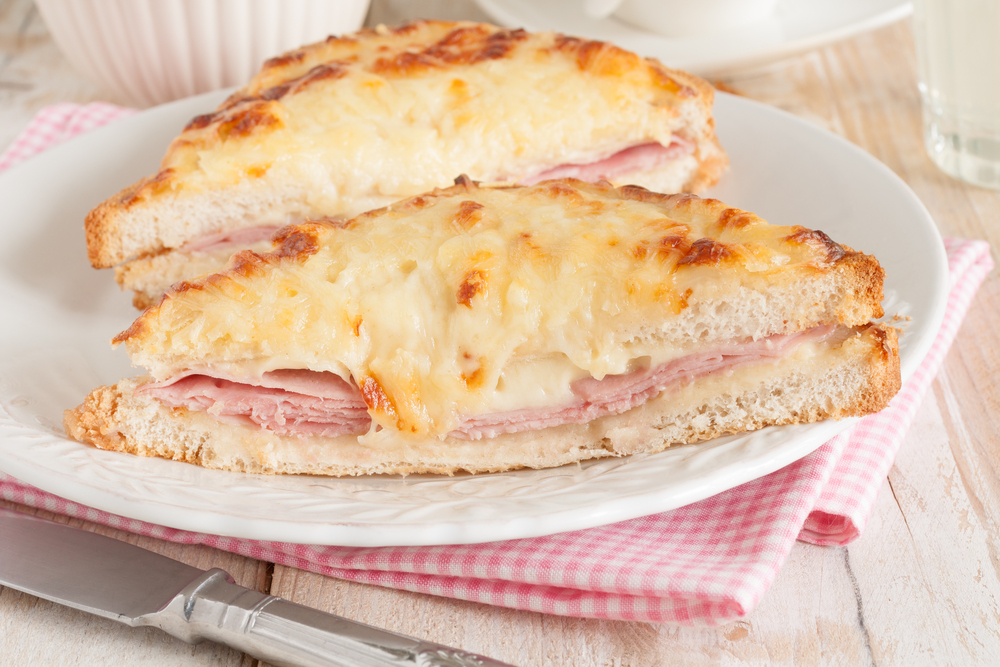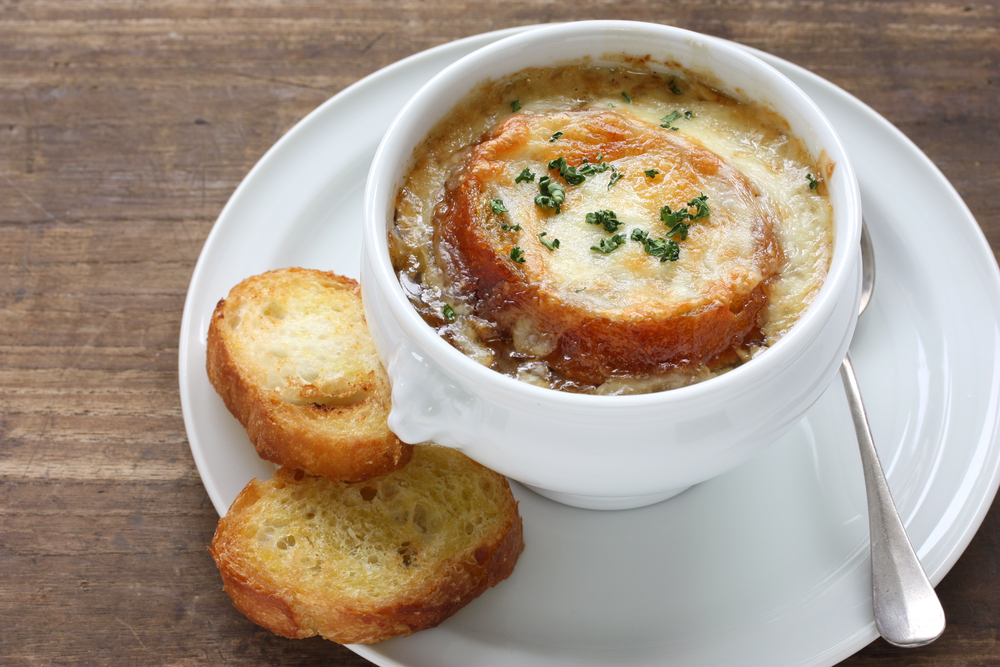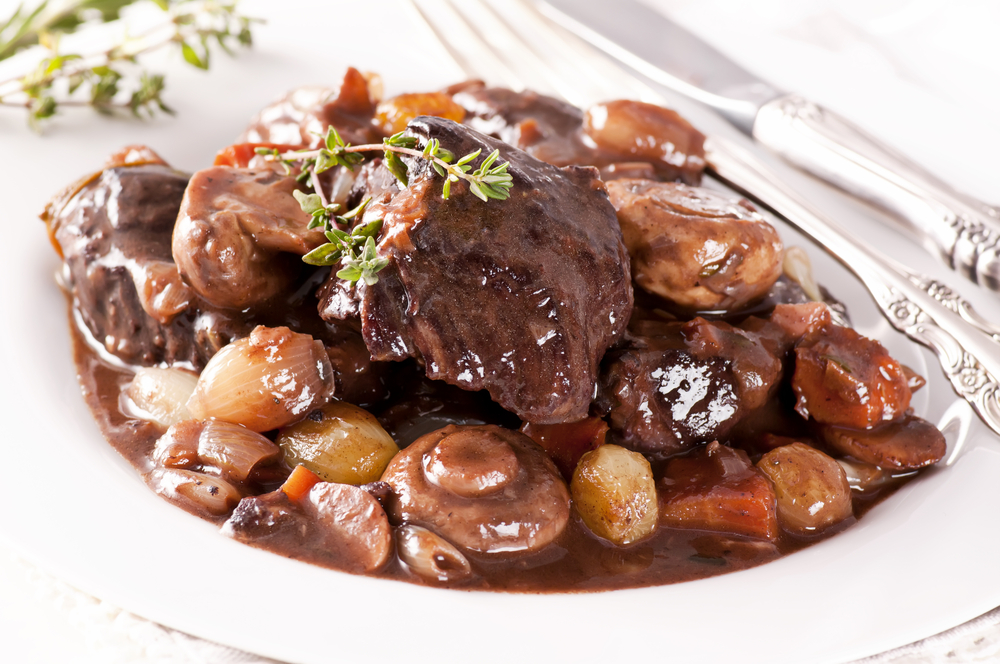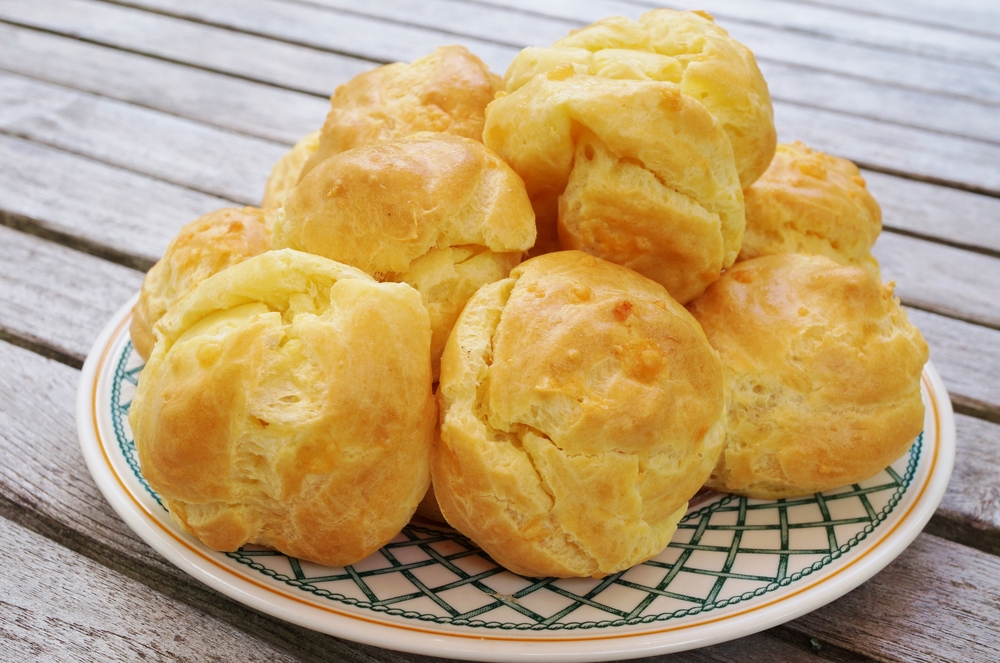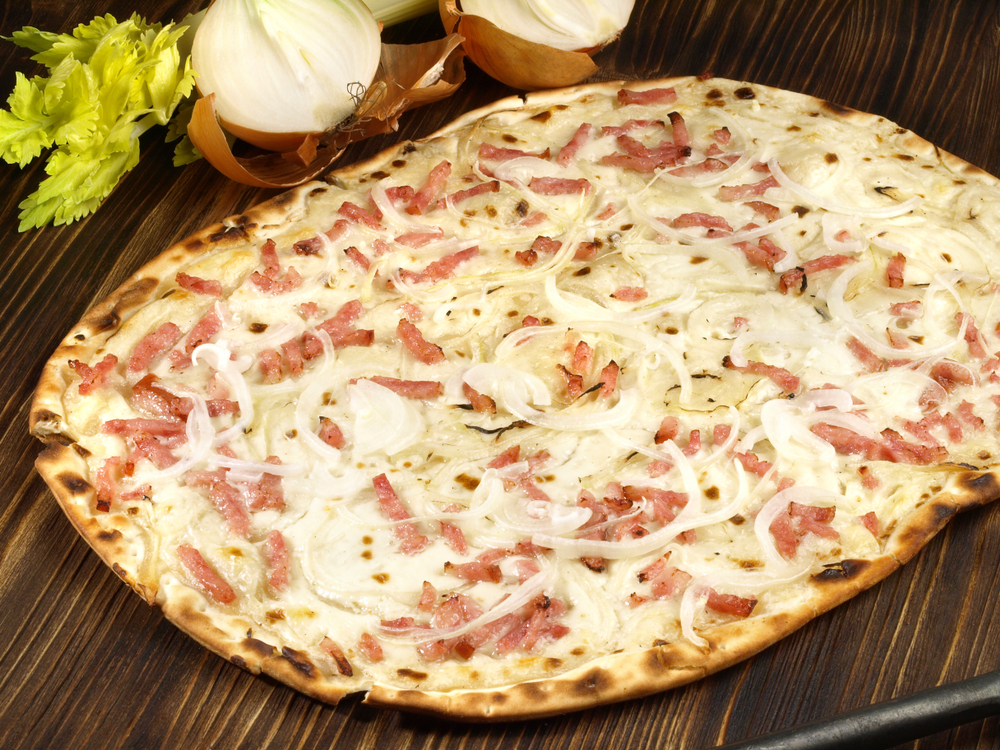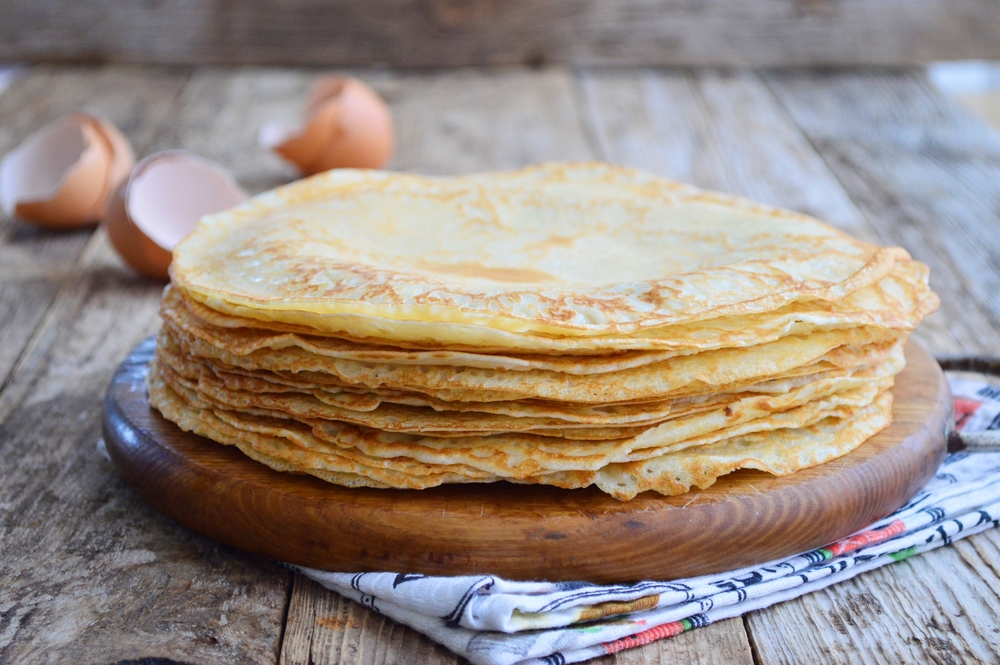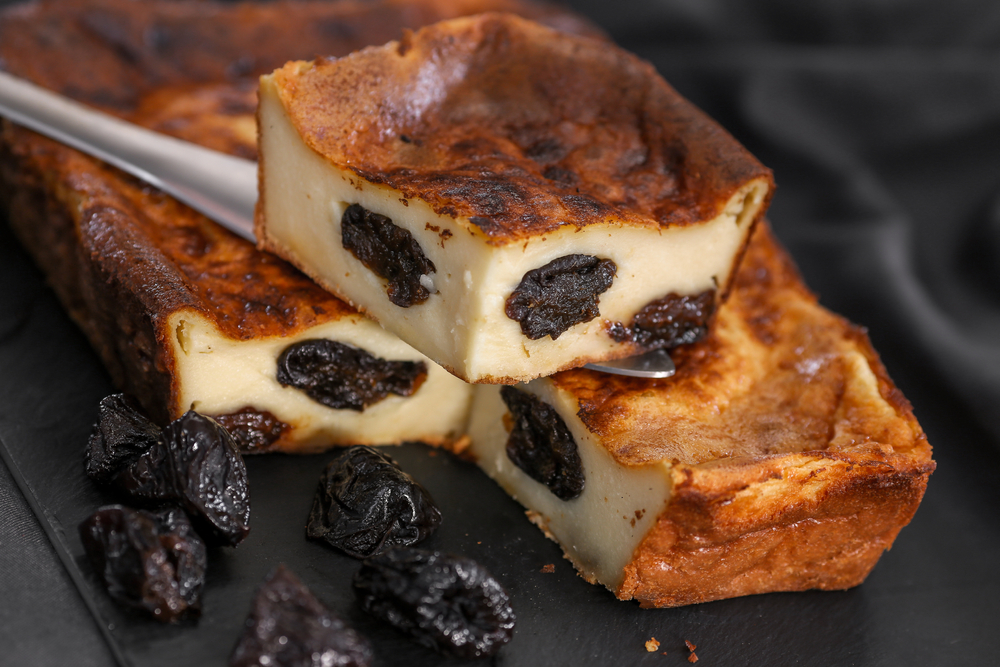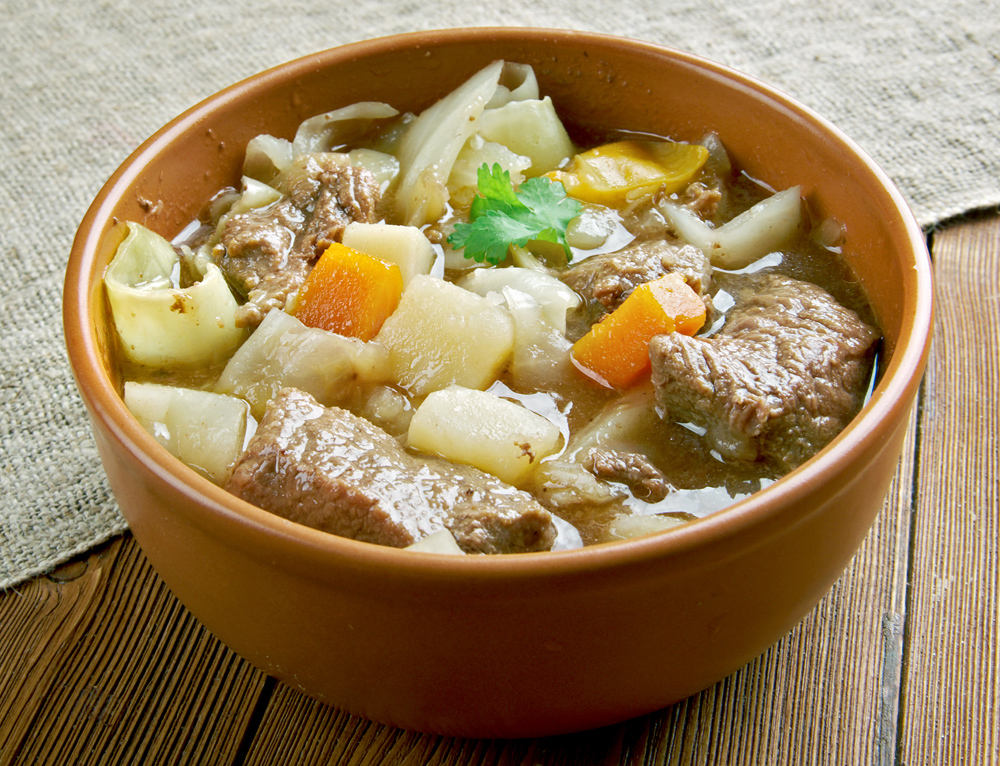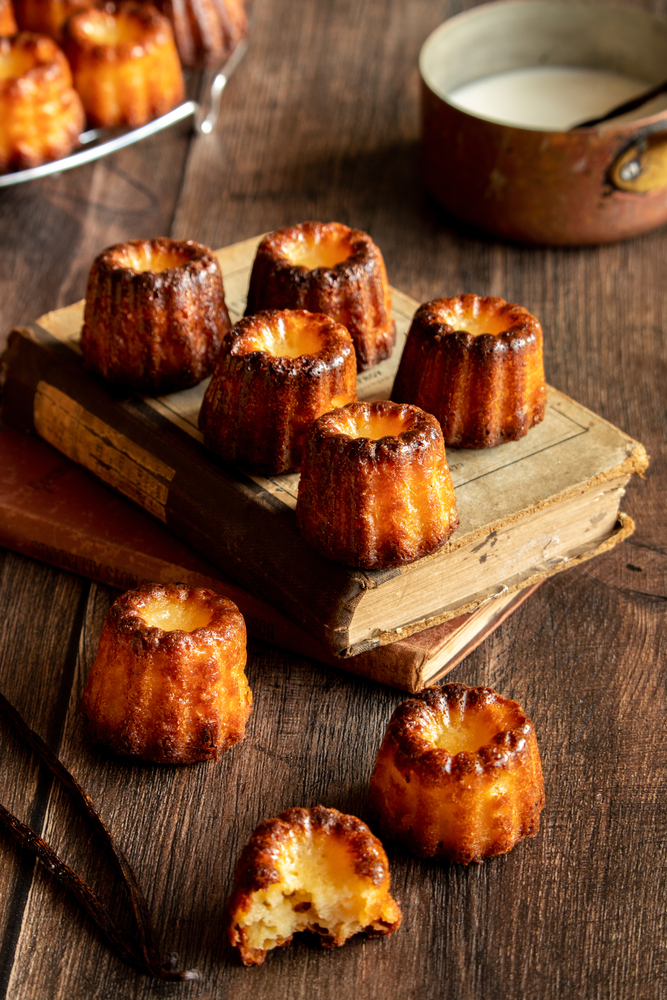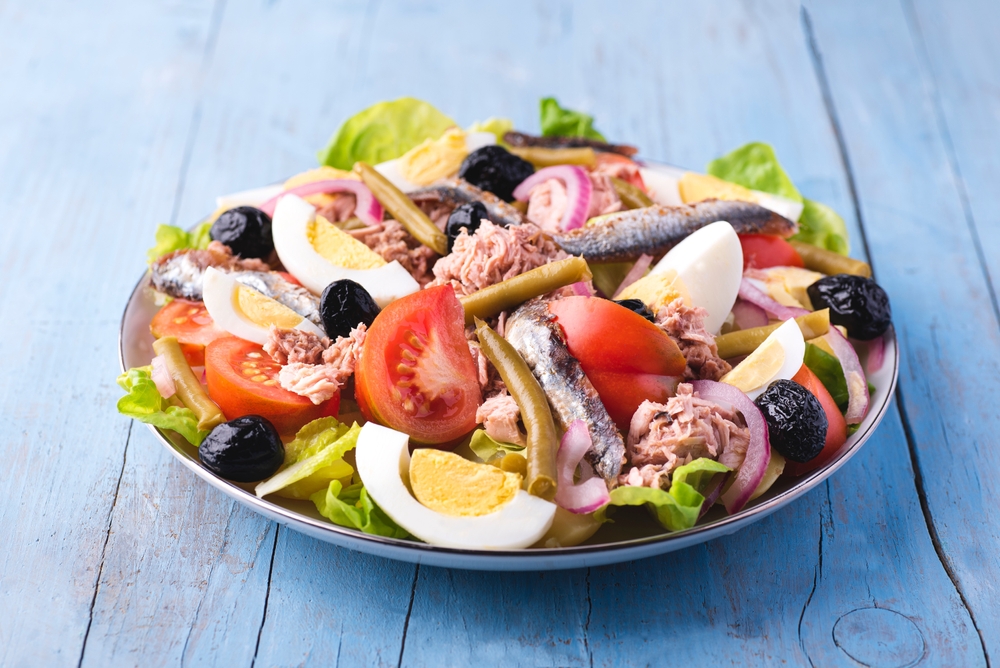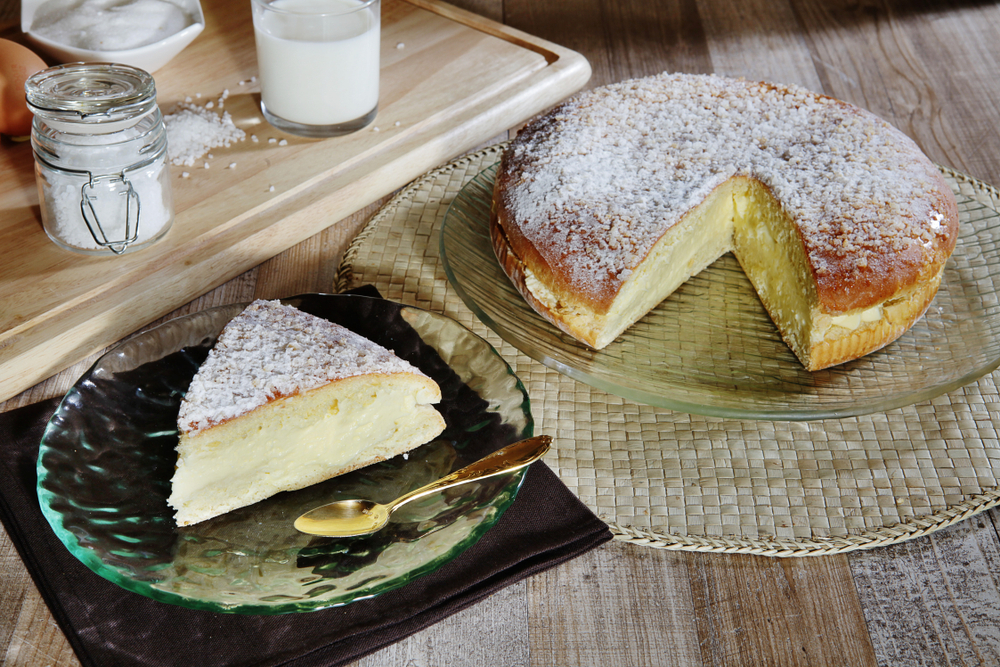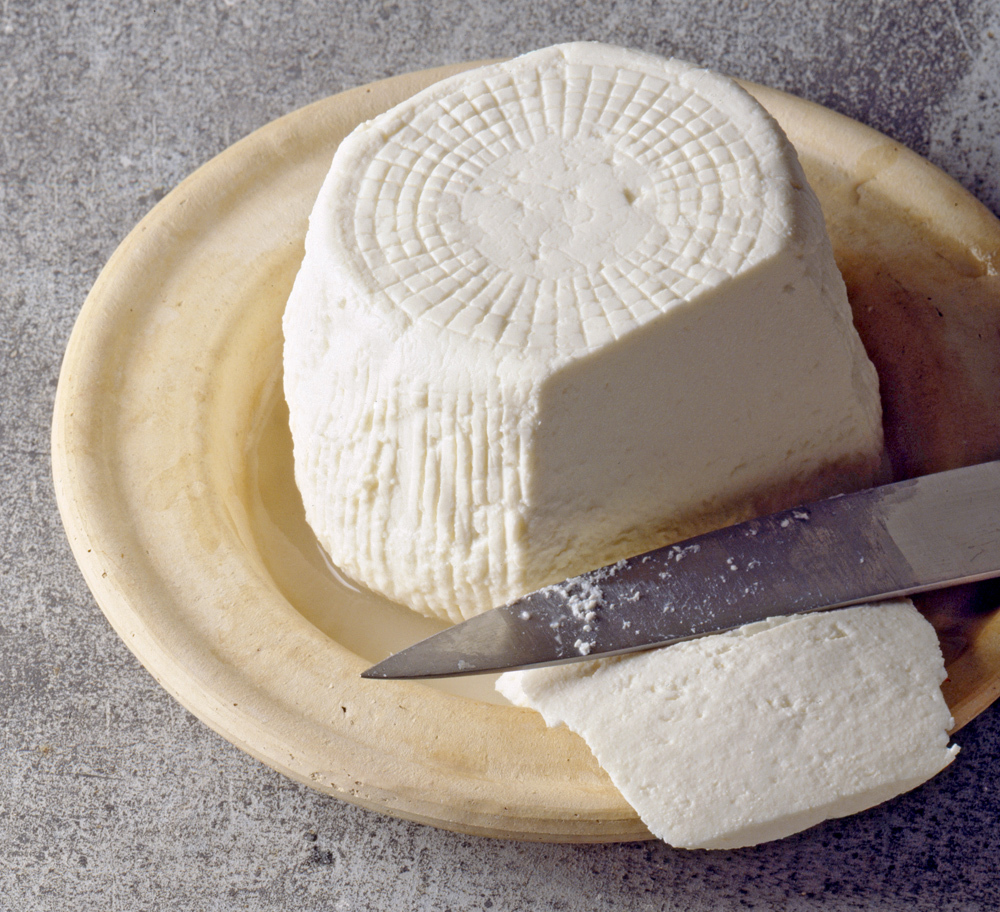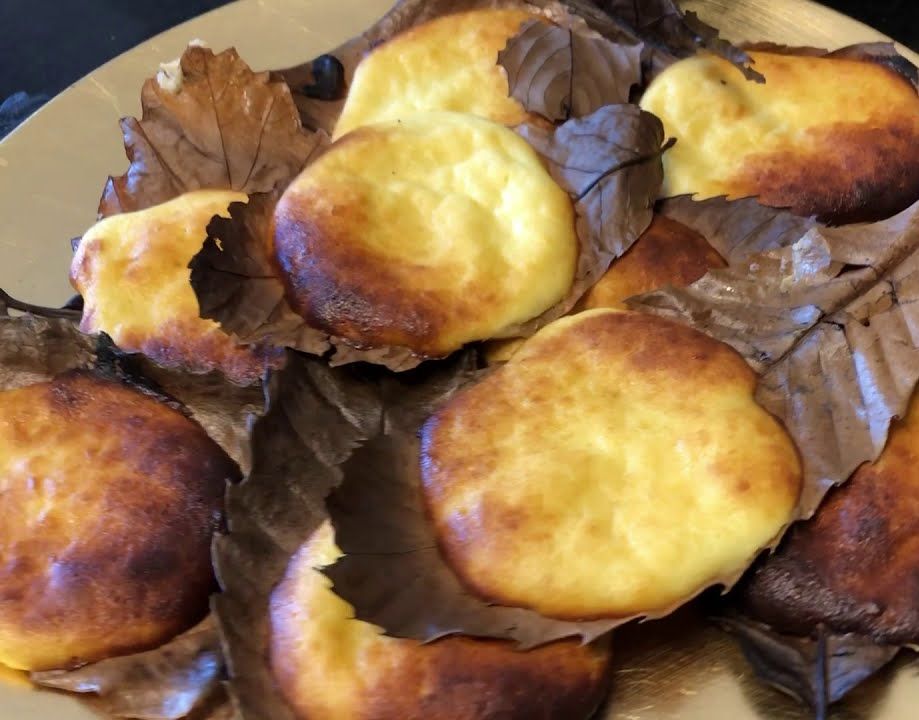Food and Drink: Regional Cuisine
French cuisine is one of the world’s most iconic and influential culinary traditions. Beyond this, though, French cuisine is a way of life—so much so that UNESCO added it to the annals of the world’s intangible cultural heritage in 2010. Whether it’s sautéing, flambéing, or poaching a dish, setting up the mise en place in one’s kitchen, ordering a meal à la carte or à la mode, or even wishing your dinner companions bon appetit, the Western cooking and dining experience is practically unimaginable without the culinary contributions of the French nation. But French food is far from monolithic, and the country’s 18 administrative regions are home to dozens of local cooking styles.
Cheese, wine, and savory sauces are the essential ingredients of French cooking. These accompaniments serve to elevate the quality of the main ingredient in a dish or a meal: building complex flavors and enhancing ingredients to create a whole that is more than the sum of its parts are guiding principles in French cooking.
The tradition of serving meats and vegetables with hearty sauces dates to the Middle Ages, when strongly flavored sauces were developed to mask the unpleasant flavors of slightly rancid meats. Distinct courses—appetizers, mains, and desserts—began to emerge around this time, and in 1300, royal court chef Guillaume Tirel consolidated the French gastronomic tradition with his seminal cookbook Le Viandier, which codified cooking and dining practices.
Modern French cuisine was elevated in the early 20th century by Auguste Escoffier, an influential chef who championed haute cuisine, a culinary idiom marked by elaborate preparation methods, fine ingredients, and meticulous presentation. While French cuisine does often carry a cachet of sophistication, many regional cooking styles have humbler, rural origins, with a focus on fresh, seasonal produce, handcrafted meats and cheeses, and simpler preparation methods.
Similar to Italy, French regional cuisines also follow a rough geographic divide between the north and the south. Roughly north of Lyon, bread is synonymous with the baguette, and butter, pork, and duck are the fats of choice, while the cuisines from the more southern reaches of the country tend toward hearty sourdough loaves and olive oil.
Paris
Paris is the indisputable center of all realms of French life, including cuisine. With over 70 Michelin-starred restaurants, the city is the worldwide epicenter of haute cuisine, but it is also gastronomically diverse, with some 40,000 restaurants serving cuisines from around the world. Paris is particularly renowned for its baguettes, pastries, and desserts, some of which have become iconic symbols of Parisian life. Though Paris is the most densely populated area in France, it is located in the largely agricultural region of Île-de-France, famed for its Brie, mushrooms, asparagus, and cherries.
In France, all roads lead to Paris, but it was the national construction of the railroad system in the mid-19th century that connected the major cities of all regions to the capital, and migrants from around the country contributed their local cooking styles to the Paris dining scene. This process accelerated during the 20th century with the influx of international immigrants from the former French colonies and beyond.
Croque-monsieur. This delectable toasted ham and cheese sandwich is a mainstay of simple café dining and is also often sold as a takeout item at creperies for busy Parisians. Each café has its own variation, and the Croque-Madame is a popular alternative, dressed up with a fried egg on top.
Soupe à l’Oignon. French onion soup, with its hearty beef stock, caramelized onions, and crust of melted cheese and croutons, emerged around Paris during the 18th century. It is a favorite evening snack in the capital city, often sold at open-air markets open late into the night.
Paris-Brest. This sweet choux pastry stuffed with praline cream was created in a round shape to resemble a bicycle wheel in commemoration of the 1910 Paris-Brest bicycle race. It is now a staple of Parisian patisseries.
Macarons. Though the first macarons came to France via Italy with Catherine de Medici’s court chef in the 16th century, pastry chef Pierre Desfontaines put a distinctly Parisian spin on the colorful confection of almond, sugar, and egg whites by sticking them together with decadent chocolate ganache.
Burgundy
The historical east-central region of Burgundy (since the 2014 French territorial reform, a part of the region of Bourgogne-Franche-Comté) is synonymous with its wines—eponymous dry reds made with Pinot Noir grapes, and whites made with Chardonnay grapes. With Burgundy’s unique terroir (a set of environmental factors that flavors the grapes in a particular way), the region’s wines are considered to be some of the best—and most expensive—in the world.
Burgundy’s cuisine showcases the rich flavors of its fertile vineyards and fields, and the region is renowned for its high-quality beef, chicken, snails and freshwater fish, Dijon mustard, and blackcurrants. Wine is an important element not only in dining, but also in cooking, and many recipes call for a splash of local red wine to add acidity and flavor.
Boeuf Bourguignon (Beef Burgundy). This traditional slow-cooked beef stew flavored with garlic, bacon fat, red wine, and beef broth originates with the farmers of Burgundy. Today, however, it is also a part of French haute cuisine and has become a standard dish at French restaurants all over the world. Julia Child, who brought French cuisine to the average American home, once described it as “one of the most delicious beef dishes concocted by man.”
Escargots. Snails are consumed throughout France, but the most prized snails come from land-locked Burgundy, which is said to produce the sweetest, plumpest escargot. The traditional Burgundian recipe calls for garlic butter, parsley, and a dash of local white wine to bring out the natural sweetness of the snails.
Gougère. This savory pastry combines egg-based choux dough with cheese such as Gruyère or Comté. The small, bite-sized pastries are traditionally served warm as an appetizer or cold as an accompaniment at wine tastings.
Crème de Cassis. Local blackcurrants are crushed and soaked in a blend of alcohol and sugar to prepare this sweet liqueur, which is both consumed as an aperitif and used as a flavoring in desserts. It is also used in a kir, a popular French cocktail of white wine flavored with the blackcurrant liqueur.
Alsace
Located along the border with Germany and Switzerland, the historical region of Alsace (since 2014 a part of the Grand Est region) shifted between France and Germany for centuries, and has been part of France since after World War II. Accordingly, the local cuisine has a decidedly Germanic influence: Alsatian cuisine is substantial and hearty, making extensive use of pork, sausages, pork fat, potatoes, and dumplings. It is one of the main beer-producing regions in France and is acclaimed for its dry Riesling wines. Because of the colder climate, the region produces excellent potatoes, cabbage, and beets, which are used liberally in local stews and pickled dishes.
Tarte Flambée. In this pizza-like dish, thin wheat dough is topped with crème fraîche, onions, and thin strips of pork fat called lardons, and then baked in a wood-fired oven. Its name translates as “pie baked in flames” and is also served in neighboring southwest Germany, where it is called Flammkuchen.
Choucroute. In this traditional Alsace dish, finely shredded cabbage is fermented with juniper berries and salt. This French version of sauerkraut is often served with pork sausages and potato dumplings.
Foie Gras d'Oie. Goose foie gras from Alsace is considered to be the richest and creamiest in all of France. It is produced by force-feeding geese with over 2 pounds (900 g) of corn each day, causing the liver to swell rapidly with fat. In Alsace, this process is still typically done by hand by skilled artisans who occasionally draw ire from animal rights activists but also earn widespread praise for their traditional handcrafted recipe.
Bredele. Christmas in Alsace is celebrated with a wide variety of Christmas cookies called bredele, flavored with spices such as aniseed, orange, cinnamon, and honey. The French version of gingerbread, pain d'épice, is a specialty from this region traditionally made with dark buckwheat, honey, and cinnamon.
Brittany
The northwestern region of Brittany has more than 620 miles (1,000 km) of coastline along the Atlantic, and the local cuisine is accordingly marked by an abundance of seafood and ocean fish. The local salt marshes and windswept plains are also extremely productive agriculturally, and Brittany is known for its salted butter and dairy products, artichokes, cauliflower, onions, potatoes, and cabbages, as well as apples and strawberries. Due to its relatively remote location, Brittany had a reputation of being a rocky, isolated peninsula, where the local culture—culinarily and otherwise—has retained its own distinct character, having been settled by British Celts around 500 CE. The local cuisine is down to earth and unpretentious, and recipes seek to highlight the flavors of high-quality, fresh ingredients. Local fleur de sel, handcrafted salt harvested from salt evaporation pools, is a luxury commodity prized for its complex flavor profile.
Crêpes. The crêpe—a paper-thin, pancake-like pastry served with savory or sweet toppings—has become associated with French cooking generally, but it actually originated in Brittany, where it is more prominent than baked bread. Creperies can be found in virtually every city and village in the region. Traditionally made with buckwheat, a crop that thrives in the rocky moors of Brittany, crêpes are now more commonly made with wheat flour.
Cotriade. Unlike classic French seafood stews like bouillabaisse, cotriade is made with only fresh fish. The recipe is believed to have originated with local fisherman, who would take ingredients that wouldn’t spoil easily—potatoes, onion, garlic, and leeks—on their multi-day fishing expeditions to cook on board with their fresh catch. It’s a simple, nourishing dish typically served with bread.
La Lotte à l'Armoricaine. Monkfish in a spicy tomato and white wine sauce called armoricaine is a regional favorite. This recipe can also be prepared with seafood, such as lobster or prawns, or other firm white fish. This dish, with its complex flavors and expensive seafood ingredients, is a local favorite for marking special occasions and holidays.
Far Breton. This custard tart-like cake is made with a rich egg and milk custard base, to which local fruits such as prunes or raisins are added. It is served as both a light breakfast dish and snack.
Kouign-amann. Making good use of Brittany’s famously creamy butter, this round, crusty cake is made of layers of dough, sugar, and butter in the ratio of 40:30:30. It is baked slowly, allowing the dough to rise and the sugar to caramelize. In the indigenous Breton language, kouign-amann literally means “cake of butter.”
Aquitaine
The historical southwestern region of Aquitaine (part of the region of Nouvelle-Aquitaine since 2014), centered in the region’s largest city of Bordeaux, is known worldwide for its prestigious red wines. Seafood and fish are in abundant supply due to the region’s long coastline, but the cuisine may be best known for its meats: steaks, duck, and lamb. Aquitaine cuisine is perhaps best described as rich—heavy on red meat and duck fat, along with various pâtés and terrines, buttery pastries, and local mushrooms and truffles. In the Basque country, located in the Pyrenees along the border of Spain, the local cuisine highlights seafood and game, and makes extensive use of piment d'Espelette, a mild red chili pepper cultivated in the region.
Entrecote à la Bordelaise. This steak dish originated in the city of Bordeaux and has become a classic of French bistro cooking: a rare steak served with sauce bordelaise, a rich concoction of bone marrow, shallots, butter, and demi-glace with famous Bordeaux red wine. A distinction must be made from entrecôte bordelaise, a steak prepared with a peppery dry rub and sprinkled with raw onions.
Confit de Canard. Duck confit is one of the most prestigious dishes in French cuisine. A specialty of this region, it is cured, slowly poached, and stored in its own fat. The classic recipe calls for frying the duck meat in its own fat, and then serving it with potatoes pan-fried in duck fat for a truly decadent meal.
Garbure. This peasant soup is a thick stew of ham and cabbage with seasonal vegetables or legumes, served with bread. Traditionally, a bit of red wine is added to the broth leftover at the bottom of the bowl, which is then drunk—a practice called faire chabrot.
Cannelés Bordelais. These small cakes are flavored with rum and vanilla, slow baked in a fluted mold to perfection, resulting in a moist interior and a caramelized outer crust. The recipe for the sinfully sweet confection is believed to have originated at a Bordeaux convent during the 16th century, when these ingredients were sold en masse by ships mooring in the port of call on their way back from the spice islands of the Orient.
Eclade. A traditional, festive way of cooking fresh mussels in this region is called eclade: mussels in their shells are placed on a water-soaked board and covered with hay or dry pine needles, which are then set on fire. After being allowed to burn for a few minutes, the flames are doused, and the mussels are ready to serve.
Provence
The picturesque province of Provence in southwestern France shares more in common with neighboring Italy when it comes to cuisine than with classic French cooking. With distinctly Mediterranean ingredients such as olive oil and olives, garlic, and sheep’s cheese, along with plenty of fresh vegetables and citrus fruits, as well as fish, seafood, and game, Provençal cuisine is decidedly lighter than typical French fare. But this isn’t to say that Provençal cuisine is light on flavor, as it makes extensive use of fresh herbs and spices like the eponymous herbs de Provence (a mixture of savory, marjoram, rosemary, thyme, and oregano) to lend flavor to recipes. Emulsion sauces such as aioli and rouille, along with tapanades, also complement everything from soups and salads to bread and meat dishes. Provençal is perhaps the only regional French cuisine that uses pasta in traditional dishes.
Aioli. A thick emulsion sauce of olive oil and crushed garlic—the leading flavors in Provençal cuisine. Aioli is served with soups, bread, and meat dishes. Rouille is a type of aioli thickened with breadcrumbs and seasoned with cayenne pepper and saffron, and is typically served with local seafood stews.
Salade niçoise. This classic of French cuisine includes tomatoes, hard-boiled eggs, anchovies, and niçoise olives, all dressed in olive oil. Purists claim that it should never be served on a bed of lettuce, though this is not altogether unheard of, particularly outside of Provence.
Bouillabaisse. The classic seafood stew of Marseille is traditionally made with scorpionfish, sea robin, and conger, though many different types of seafood and white fish are used in practice. The broth gets its complex layers of flavor from white wine, saffron, tomato, and onion, as well as fresh herbs like fennel, sage, and bay leaf.
Ratatouille. This coarse, stewed vegetable dish is originally from Nice. The sautéed mix typically includes a tomato foundation with garlic, onions, zucchini, eggplant, peppers, and fresh herbs. Each vegetable is traditionally cooked separately before adding them together, after which they are cooked slowly together.
Tarte Tropézienne. This cream-filled brioche was invented by St. Tropez pastry chef Alexandre Micka. According to legend, it was named by French actress Brigitte Bardot, who in 1955 was in town filming And God Created Women. The pastry has since embodied the glamour and decadence of the French seaside city of the rich and famous.
Corsica
The cuisine of the island of Corsica is celebrated for its fresh fruits and vegetables, cured meats, and simple, down-to-earth recipes. Located in the Mediterranean, Corsica developed a distinct culture and culinary tradition, in part due to its geographical isolation from mainland France. Fishing is an important part of the local economy and a cornerstone of Corsican cuisine. The mountainous terrain and mild climate proved conducive to sheep and goat husbandry, as well as wine and honey production. Because the island is rather arid, wine was traditionally consumed in greater volumes than water, which was in short supply. The lack of arable fields and fresh water for irrigation made grain production a complicated affair. Until the 20th century, chestnut flour was the staple grain consumed, and it is still an important ingredient in many desserts and holiday dishes.
Civet de Sanglier. Corsican wild boar is considered some of the best in the world, with a sweet, smooth flavor from its diet heavy in local chestnuts. This wild boar casserole is the classic dish in Corsican cuisine, flavored with fresh herbs, carrots, chestnuts, and red wine, and is traditionally eaten in winter.
Brocciu. This lactose-free whey cheese is similar to ricotta, but is produced with sheep’s milk. It is an important ingredient in Corsican cooking, and is also eaten on its own, or with wine or bread.
Falculelle. This typical Corsican dessert is a small cake made of brocciu cheese mixed with egg yolks, flour, sugar, and orange zest, baked and served on a chestnut leaf.
Article written for World Trade Press by Carly K. Ottenbreit.
Copyright © 1993—2025 World Trade Press. All rights reserved.

 France
France 